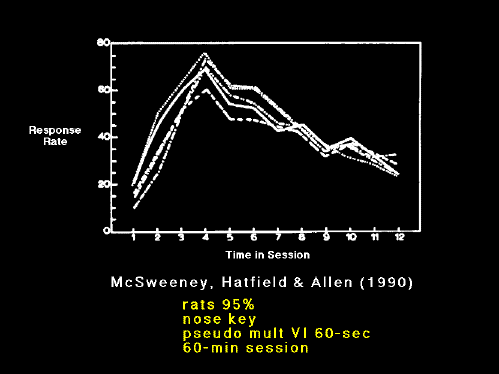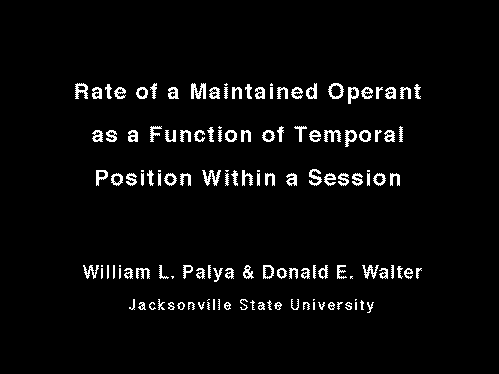 Figure 2
Figure 2


 Figure 1
Figure 1
Psychonomic Society, November 1995 (plus material that had been cut after the talk had been timed).
McSweeny, Hatfield and Allen demonstrated a reliable change in the rate of a maintained operant simply as a function of time in the session. That is, simple exposure to what is typically considered unchanging conditions resulted in a systematic change in behavior. As can be seen in the figure, across twelfths of the session, response rate rose from approximately 20 responses per minute to 70 responses per minute, and then fell back to approximately 30 responses per minute.
McSweeny and her colleagues went on to demonstrate that the effect occurred with:
McSweeney has pointed out that this effect is important for a number of reasons.
First, if we are to have a general and coherent model of behavior, any reliable effect must be understood. More specifically, if we are to understand schedule-controlled behavior, then we must understand any reliable effect pertaining to the behavior maintained by schedules.
Secondly, any index which collapses across a session in spite of systematic changes cannot be used to refer to levels of analysis shorter than the session as a whole.
Finally, any comparison of treatment effects obtained in different portions of a session would be confounded with the systematic within-session rate change.
However, there remain reasons to be cautious.
The effect is not ubiquitous. It is not apparent in Ferster and Skinner. Compensation for the effect is not common practice. Even McSweeny, Hatfield and Allen noted exceptions and a large within-session effect as not apparent in Palya's documentation of behavioral dynamics.
Secondly, the within session effect is not always bitonic. Behavior can rise, fall, rise and fall, fall and then rise, or be relatively flat across a session.
Finally, the within-session effect varies in magnitude from more than a 400% change to nothing at all.

